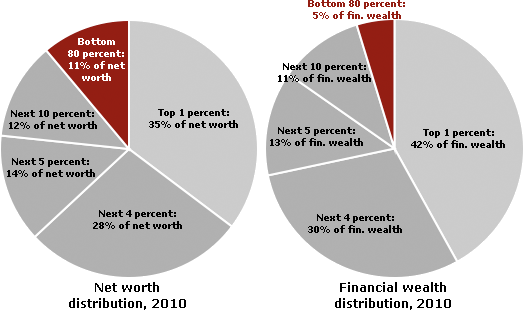by Mindy Fried | Nov 5, 2013 | Uncategorized
I was listening to a new EP by a talented musician named Nathalie Raedler and discovered a song called One Night Stand https://soundcloud.com/nraedler/one-night-stand, that poignantly describes an experience that inspired her song. It got me thinking about how much progress women have and have not made over the past few decades around sexuality and relationships, particularly young women, including and maybe especially college-age women.
As a “veteran” of the 1970’s women’s movement – or what is now being called the Second Wave – I was part of a women’s group that met weekly to read and discuss historical and contemporary feminist articles, and to support one another in applying feminist principles in our personal and professional relationships. We “took charge” of certain activities that were typically done by men at the time, like changing tires and oil, and doing basic home repair.
![]()
I remember how thrilled I was to change a doorknob and shingle a house on Cape Cod! We analyzed popular culture to understand how it was reflecting and promoting gender imbalance, and over endless cups of coffee, we bonded as friends and as change-makers, taking charge of our relationships, our bodies and our lives. A small group of us published a newspaper called “New Salt City Press”, which reviewed films and major national and international news, including a how to column on topics like car repair and how to winterize your home. Our underlying message was an echo of women’s cries during World War II – We Can Do It!
While we were not a part of the “free love movement” – that was another “faction” of cultural change at the time – we also believed that women had the agency to determine how we wanted to engage in sexual and other types of relationships.
A few decades later, I joined the Women’s Caucus at Occupy Boston, a group of women who came together because a couple of women who lived in the encampment had been sexually assaulted, and moreover, they felt men were dominating the conversation at the encampment. I was disturbed to hear about these problems, but curious about and ultimately impressed with these women, many of whom had literally been schooled in universities around the country to understand and confront sexism. I discovered that the spirit of women-oriented culture lived on among these young women, who were both lesbian and heterosexual, in a “third wave” of the feminist movement. Men were still dominating the mainstream culture at Occupy, a microcosm of the broader society.
![]()
But without much backlash – a sign of changing times – these women at the encampment made great strides in inserting their voices into the conversation, organizing a successful “women’s” march, a speak-out on violence at the encampment, and sponsoring women speakers on reproductive rights, rigged ballots and gender and unemployment. Certainly what was different from 30 years before was that this “third wave” was bringing its collective voice to this particular table successfully. Despite enormous strides women have made in both the work and domestic spheres, it still seemed that young women – college age and in their early 20s – were experiencing gender imbalances in relationships with men.
Musician Nathalie Raedler captures the experience of this imbalance in One Night Stand, which she wrote after spending a night out with a group of “guy friends”. In this song, she describes how her “guy friends” had spent most of the night assessing women as possible pickup material, based on various body parts.
Their banter didn’t result in anyone taking anybody home that night, as far as she knew, but it did reinforce the bond between and among them, as they entertained one another with the assumption that the women were there for the taking. Did they think that their banter would also impress her? Or did she become invisible as they focused their energy on objectifying the women around them?
This male bonding over sexual exploits is explored in depth by sociologist Danielle Currier, in a recent Gender and Society article, based on her qualitative study on hookups among college-aged women and men. Based on interviews with 78 full-time, heterosexual students at a coed, public university in the South, Currier found that hooking up is common among college students, but there remains a sexual double standard. All of her study participants report that hookups are “ever present and normative in college and a central component of social life”, women participants disregarded their own sexual desires, performing oral sex on men without reciprocation and “ignoring their right to sexual pleasure in hookups”. As one of her participants said, “sex is defined as over when the guy climaxes”. Pleasure is equated with orgasm for men, rather than the full array of physical and emotional experiences associated with sexuality. Currier concludes that a central aspect of this configuration is “gender asymmetry”, with the assumption that men will achieve sexual satisfaction in hookups, and women’s role is to help them achieve this goal. Another critical aspect of her analysis is that women want to avoid being labeled a “slut”, worried about whether they will be viewed as having “too many” hookups. Women were “strategically ambiguous” about the nature of their hookups, not talking about them, and being vague about the details, to avoid this label which was applied only to women, not men, reflecting the “underlying double standard” used in labeling the nature of and amount of their sexual activity.
![]()
The aforementioned finding in Currier’s research, which Nathalie Raedler gives voice to in One Night Stand, is the “importance of bonding with or impressing other men, much more than bonding with or oppressing women”. Currier concludes that the gender imbalance in hookups is evidence of how “emphasized femininity is often a reaction to or an offshoot of hegemonic masculinity”. Moreover, “doing femininity still often means reacting to men and cultural definitions of masculinity”. In her song, Raedler describes the men as “hunting down random chicks”, asserting that the men have “nothing in your head. That’s why you have to think with your dick”. To the women, she asks “are you looking for someone? You’re selling yourself cheap.” Her song challenges men and women to undo this gendered configuration. Check out her song and new album: http://www.nathalieraedler.com/. Raedler has a beautiful and strong voice and a lot to say, and in a marriage of art and scholarship, Currier’s research captures the essence of Nathalie’s song with a strong scholarly piece of research.
by Mindy Fried | Jan 31, 2013 | Uncategorized

Three weeks ago, I had a freakish accident in the parking lot of my local Trader Joe’s. My shopping cart hit a pothole and overturned, and somehow the momentum took me with it, as my body catapulted over the cart and slammed into its metal bars. I wrote about the accident in a previous post, so I won’t rewind to describe details of my night in the emergency room and the generous people who helped me. But the post-accident experience was equally challenging, in part because of the physical pain, but also because of my mottled appearance. Right after the accident, my nose swelled to around three times its size, and by the next day, I also had two black eyes. Over the course of several weeks, the bruising migrated down my face until my entire face was covered in streaks of black and blue, and then green and brown and yellow. When I went to a plastic surgeon on the advice of my primary care doctor, to see if my nose was broken, he said I had experienced “major facial trauma”.

For the first week, I was just absorbing the shock of the accident and didn’t leave my house very much. But as I re-entered public spaces, I felt self-conscious and uncomfortable. Okay, part of that is vanity, but the other part is social perception, or how others were seeing me. What does one think when looking at a woman with “facial trauma”? You got it. She must be abused. Every inch of the way, practitioners asked me if I felt “safe”, which was code for, “are you being abused?” I am glad that they asked, because for some women who looked like me, the answer is resoundingly, yes. But even though the source of my battered face was a weird accident, I believe I got some insight into how women who are physically abused are further isolated because of the stigma of being a victim, a woman not in control of her destiny.
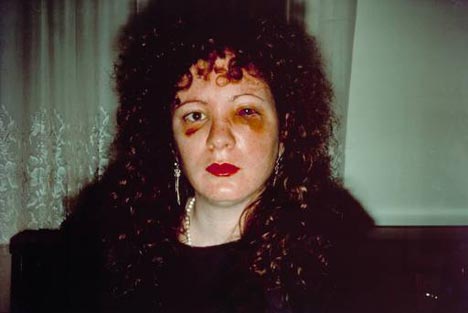
In the first few days after my accident, a couple of friends made so-called jokes about how they didn’t know my partner was abusive. It was supposed to be funny, because he is the polar opposite of aggressive. But it was not funny, and I made sure the jokes stopped. I thought about Nan Goldin’s 1984 self-portrait, called, “Nan, One Month after Being Battered”, in which she stares out at viewers with two swollen, blood-red eyes, surrounded by bruises, wearing bright red lipstick. It is shocking to see her honest portrayal, with her eyes providing a window into a relationship gone wrong.
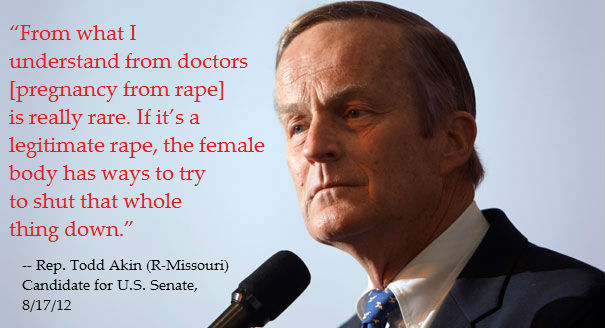
Once again, this issue is front and center in the public sphere, as the 1994 Violence Against Women Act is up for reauthorization. This bill is critical to fighting domestic violence, sexual assault and stalking, because it funds shelters and legal support for victims of abuse, regardless of their sexual orientation or immigration status. After an initial version of the bill breezed through the Senate, it hit a wall with the House Republicans who want to limit the rights of undocumented immigrants. Now a new Senate bill has been introduced which limits the number of special visas, called “U-visas”, provided to undocumented immigrants who are victims of domestic violence and sexual assault. House Republicans also want to block current U-visa holders from applying for permanent residency after three years, which is a critical provision that encourages women to contact law enforcement without fear of deportation. Check out this January 28th op-ed in the New York times: http://www.nytimes.com/2013/01/29/opinion/violence-against-women-act-is-reintroduced.html
It’s time for this bill to pass.

As this bill is up for a vote, we have an opportunity to bring attention to the issue of violence against women in a very public way, at the national and global level. Every year, on February 14th, Eve Ensler, the author of Vagina Monologues, urges women to call for an end to violence against women. This year, she has founded, “One Billion Rising”, a global movement of “women and those who love them to walk out, dance, rise up and demand an end to this violence”. All over the world, women will be gathering to dance a simple, but beautiful dance together, in public places, as a public statement to support the end of violence, and to express collective strength and solidarity across borders. In Massachusetts, youth groups, domestic violence programs, community centers, and more are banding together to dance in celebration of women, and to protest against a culture that condones rape and accepts violence against women and girls as a given. These gatherings will be multiplied all over the U.S. and throughout Europe, Africa and Asia.
Ensler says, “One billion women dancing is a revolution!” It’s just one day, but it’s an opportunity to raise awareness of this still pervasive problem. If you’re interested in joining in, there are many events being planned on February 14th, as well as days before and after, to challenge violence against women: http://onebillionrising.org/
Find a rising near you! http://onebillionrising.org/page/event/search_simple
ONE BILLION RISING IS:
A global strike An invitation to dance
A call to men and women to refuse to participate in the status quo until rape and rape culture ends
An act of solidarity, demonstrating to women the commonality of their struggles and their power in numbers
A refusal to accept violence against women and girls as a given
A new time and a new way of being
by Mindy Fried | Dec 5, 2012 | Uncategorized

As humans age, so-called modern medicine makes it possible for us to replace our worn-out parts with new and more supple ones. My beloved aunt was rejuvenated with two new knees, eliminating pain and adding a bounce to her step as she was able to walk up and down stairs once again. My father, a cousin, and a few friends have acquired new hips, which allowed them to walk, dance and even play basketball. And a number of people I know now have new lenses for their eyes, with the removal of their rheumy and unnecessary cataracts and the insertion of a new and modern 20/40 monocle. I am about to join this particular club. As these new body parts clubs go, this is apparently a fairly easy one to join. With the promise of a 10-15 minute surgery, you get a new eye and better vision almost immediately, or so they say. When asked, will you, Mindy, take this new body part into your eye socket, honor it in sickness and in health all the remaining days of your life, I gotta respond “eye do”.
For the following few days, I will be journaling my experience in preparing for and securing my new lens.
Day 1: Eye drops
Holy crap, this is real! The promise of a new eye is dizzying! No more blurry headlights. No more overusing my left eye in order to write, read and well, basically, see. And yet there is a touch of sadness to say goodbye to something that has influenced my vision for several years. New parts mean leaving old parts behind. Time to move on, but am I ready? How many artists’ vision of the universe were clouded, but made more interesting, by an abnormality of their vision? Picasso? Manet? Van Gogh? I wonder if life will become less interesting? But this thought is fleeting, as I recall that I am not an impressionist artist and this cataract has become more like a veil that obscures the show.
The set of three eye drops, four times a day, for three days – first daunting in their little bottles with complicated names – are simple to administer.
Day 2: The video
I foolishly watch a video of my very own doctor performing cataract surgery. I know two people who have had their cataracts taken out by him, and 100% of my small sample is very pleased. The literature is only positive about cataract surgery. Only positive outcomes for the large majority of patients, and I’ve been told that I am a candidate for a perfect outcome. Watching the video is both fascinating and terrifying. Think Clockwork Orange-scary, when a “probe” – aka small knife – goes into the eye, with viscous liquid shifting about as a new foreign object is ultimately inserted. I am thankful for the drugs that will blunt my fears and make this an “uneventful” experience, maybe even a happy one. We shall see.
Meanwhile, I’m thinking of new names for my eye. At the moment, since I’ve opted for a lens that will give me terrific long-range vision, I like the name, “eagle eye”.

Day 3: Sad
This morning, I feel sad, and cannot figure out why. Nothing is feeling right, and then my partner suggests that it may have something to do with the surgery. Can that be? Early buyer’s remorse? By the end of the day, I am totally fine.
Day 4: THE DAY
Getting up at 5:30 a.m. is an adventure. I’m scheduled to arrive at the doctor’s office at 7:00 a.m. and I am exactly on time. The instructions were “no food after midnight”. Check. And “only clear liquid until 5:00 a.m.” Easy-peasy. But somehow when I get on the subway to go downtown for the appointment, the stomach rebels and screams, “feed me”. Once settled in at the office, I discover a stream-lined system in which patients are taken from the outer mahogany-finished office into a sterile-looking clinical area, where around eight of us are seated in comfortable chairs that recline just a bit, but are soon to become operating tables that lay flat. One-by-one, our vitals are taken by kind and efficient nurses. It turns out that my cousin’s cousin is one of the nurses, and she looks out for me, telling everyone “you gotta treat her right”!. The banter is reassuring, but I can’t imagine that if I didn’t have that connection, I would be treated “wrong!”
One by one, we are hooked up to an IV, and fairly quickly taken to the next way station, a private space separated from the masses by curtains, where an anesthesiologist comes in and asks a few questions. This is where things get a little hazy, because a combination of valium and pain medicine kicks in. I am now officially happy! I’ve read that during the surgery, the patient might see bright colors, but instead I am covered by a lovely, white, silk-like shawl that seems to wave throughout the surgery, as I look up at it in fascination. I see no nasty probes, although at one point, I do hear the whirring of a machine. I harken back to the &%* video I had watched, with my doctor performing this exact surgery, and I think I know what’s happening to me too. But la-la land takes over and I really don’t care.
Soon, I am whisked back to the original clinical room, but this time, I am wheeled over to the other side of the room, where I sit with a patch on my eye – pirate-style – and “recuperate”. Nurses offer me packaged muffins or packaged peanut butter crackers and juice. By now it’s a veritable party! I watch other discharged patients walk out with a kind nurse holding their arm, and I am waiting for my special departure, but when am told I can leave, no one hops to my side. I hope that’s a good sign that I look capable and I prepare to exit. Standing up slowly, I start to wonder if it’s a good idea, but discover that my legs do, indeed, still work.

The final station is back at the start where people sit in the mahogany-finished room, all patched up and waiting for their rides. I chat with a guy who runs a trucking business. We talk about work stuff, because I know someone who did this thing called “network mapping” for the trucking industry. The brain is functioning, albeit with a patched eye.
Later in the day: THE REVEAL
After getting home, I putter around, navigating the world with my left eye, which is what I’ve been doing for a year or so anyway. Not much is different, except that I’m a lot more mellow than usual. Valium will do that. Finally, at noon, I am ready for the “big reveal”, when I take off my patch and wah-lah, the universe will come into focus! My daughter calls and I decide to video-tape the event with her on the phone. Slowly, I pull off the patch and gradually open my right eye. But instead of clarity, the universe is double-visioned and blurry. I momentarily forget the large caps on my discharge papers that say, “DOUBLE VISION OR TILTED VISION IS COMMON WHEN YOU FIRST REMOVE THE PATCH”. The video captures my restrained panic, as I say, slowly, “Wow, this is really weird!” I re-read the discharge papers, after an unnecessary call to the doctor’s office. The reassuring nurse on the other end of the phone manages not to sigh and tell me, “read the g-d paper”, and I’m grateful. Several hours later, as the temporary (and agreeable) mellow is fading, the universe is finally coming into focus.
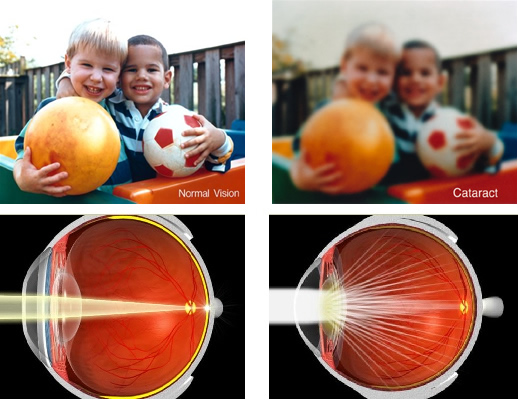
The rest of the healing is pretty straight-forward. A follow-up appointment tomorrow, and a bunch of eye drops. A few things to pay attention to for the next 24 hours: no sleeping on the side of the operation, no bending from the waist or lifting anything over 10 lbs, and no getting the eye wet. But that’s only half the glass. It’s fine to work, to read a good book, to walk around the pond, to watch a great (or crappy) video, and eat ice cream and talk on the phone with friends and family and more…
Day 5: The morning after…
I open my eyes and I am, indeed “eagle-eyed”. All right, just in one eye, but alas, there is one eye with vision that is crystal clear. It is bizarre. It is fun. It is unbelievable. Mission accomplished.
Day 6: Follow-up visit
When I return the next day for a follow-up, I re-meet my trucking biz friend, and he looks about 10 years younger, post-surgery. I’m not sure why, but maybe it’s that surgery, even minor surgery, can make a person more vulnerable, and that shows. We are joined by three others who also had their surgery the day before, and I learn that the doctor performed 55 such surgeries in one day. Multiply that times a week, times a year, times all the other doctors’ offices where these surgeries are performed, and you have a veritable stadium full of new eyes.
How fascinating that we can improve the quality of our lives, even in this simple way, as we live longer. Just a few decades ago, when people had their cataracts removed, they were not supplanted with sharp lenses that improved their vision. Instead, they wore “coke-bottle” glasses that were clumsy, unwieldy and distinctive. A tell-tale sign of age. And probably in another few decades, this seemingly simple exercise in vision improvement will be even further improved. Now we can replace body parts – new eyes, hips and knees – that make our bodies hybrids. A 17-year-old eye or a 20-year-old hip or knee matched with a 50- or 60-year-old brain. The adage that we are all the ages we have been becomes even more powerful…
As Betty Davis once said (and I paraphrase), “old age is no place for sissies”…
by Mindy Fried | Oct 25, 2012 | Uncategorized

Around fifteen years ago, when cell phones were becoming more commonplace, I was still a hold-out. But there were those moments, initially maybe every few days and then eventually more often, when I really wished I had one. I called those “cell phone moments”, and when my “cell phone moments” were strung together like a pearl necklace, I finally succumbed. Lately I’ve been having another type of “moment”, only this one I call “wish I had an economist to ask that question” moment. These moments are becoming more and more frequent as I listen to the news. So instead of depriving myself of an economist, as I had done with my cell phone, I reached out to one of my favorites, Dr. Randy Albelda. Randy is a professor at University of Massachusetts in Boston who I’ve known since WAAAY back in the 1980s. At the time, she was heading up the Massachusetts State Senate’s Taxation Committee and then later the legislature’s Special Commission on Tax Reform, and I was running a program called the Massachusetts Women’s Budget Project.

The Women’s Budget Project brought together advocates representing thirteen different social and economic programs affecting women and children, in an effort to coordinate our advocacy efforts. While we had become great at articulating the amount of funding we wanted from state legislators for our programs, we had no idea where the funding would come from. Consequently, our advocacy efforts were undercut when politicians told us, “Sure, I agree with you, but we don’t have the funding”. We knew had to get savvy about the revenue side, to understand how money could be generated to pay for the critical programs and services we were fighting for.
In walked Randy, a brilliant economist who helped us make those links, so that when we spoke with the politician who said, “Sorry, no money”, we could return with, “Well then, we need to generate tax revenue fairly so our programs can be funded”. Maybe these days, more people understand that the funding side of the budget is connected to the taxation side, but it’s still pretty complicated.

Lately, as I’m listening to the economic policies of candidates in our Presidential election, I have had more than a few “wish I had an economist to ask that question” moments. So I wrote a note to my favorite one, and she has kindly agreed to answer three top questions about the economy. In order to select the top three – because there have to be at least ten or twenty or more top questions – I queried my sociology colleagues from the national feminist sociology organization, Sociologists for Women in Society http://www.socwomen.org. In response to my request for questions, a number of people (see list at end of post) offered some excellent choices. Randy and I have selected the ones we think are most on people’s minds.
By the way, after reading this post, if you’re interested in reading other writing by Randy, she has published some very cool books that address labor economics and women’s economic status, including: Glass Ceilings and Bottomless Pits (with Tilly), which I’ve used in many courses I have taught, as well as others like Unlevel Playing Fields: Understanding Wage Inequality and Discrimination (with Drago and Shulman) and Counting on Carework: Human Infrastructure in Massachusetts (with Duffy and Folbre).
Question # 1: What is trickle-down economics and does it work?
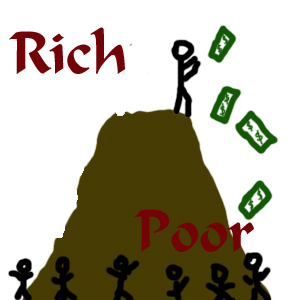
Dr. Albelda: Trickle-down economics is an extension of University Chicago style economics that argues if you give rich people more money (mostly through tax cuts for the rich) they will invest it in new plants and equipment and create jobs. The latest incarnation of this is to talk about the 1% as “job creators.” It hasn’t worked in the recent past, isn’t working now and won’t work in the future. In the 1980s I co-authored a book called “Mink Coats Don’t Trickle Down” http://www.amazon.com/Mink-Coats-Dont-Trickle-Down/dp/0896083284 which summarizes the problem. Speculative activity, Cayman Island off source accounts, and buying up of smaller firms, do not create jobs. In fact this activity is more likely to destroy jobs. More importantly, trickle-down economics as tax cuts for the rich has increased the deficit in non-productive ways. It promises to do even more of that, providing the ammunition to cut government spending that does create jobs and make productive investments in the population.
Q: You say that trickle-down economics as tax cuts for the rich has increased the deficit in non-productive ways. I kind of get that. But what is a productive way to tackle the deficit?
Dr. Albelda: I reject the idea that the large deficit is the biggest problem we face. Deficits are not bad if they are the result of borrowing to keep the economy afloat and to make the kind of investments we need in human and physical infrastructure. So, as the economy improves the deficit will be reduced. We do NOT need to slash social security, Medicaid, Medicare, Food Stamps, and aid to states and localities. Indeed, to do so will reduce economic growth. We do need to increase taxes on those who can afford.
Question #2: How can sustainable growth be enacted that can benefit the whole population rather than the 1%?
Dr. Albelda: Economic relations and activity are socially constructed, not unlike race and gender. In short, they are what we make them to be. There is nothing “natural” about the way we organize the production and distribution of goods and services. In that sense it is all man-made (yes, I meant to say “man” made). They are contested. But they are hard to change because those that gain from the current system (and care little about sustainability) fight to keep it. Further, there are powerful symbolical and embedded views about the ways in which our current systems work that are hard to change. The way to enact sustainable growth is to mobilize, reshape the debate and demand it.
Q: I don’t mean to open up Pandora’s Box, but can you say what you mean by “powerful symbolic and embedded views about the ways our current system works”?
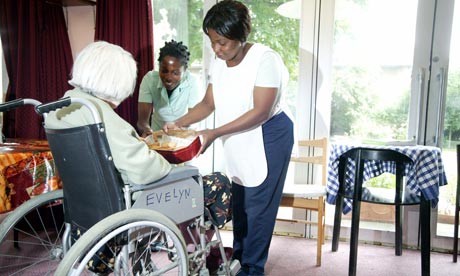
Dr. Albelda: What I mean is the unquestioned faith that markets work well for everyone and that the “economy” can only be understood by particular experts. This ideological reverence to mainstream economics is incredibly detrimental to the bottom half of the population and to women. For example, paid care work – mostly done by women – is typically low paying, despite its importance to families and society. This is not difficult to understand or show. Yet, when advocates argue to include home health aides under the purview of the Fair Labor Standards Act to be covered by the minimum wage, businesses pull out what are essentially ideological (i.e. what they believe, not what the evidence shows) arguments that will reduce employment dramatically and hurt the very people it is intended to help. They muster up market-based theory to justify and promote inequality.
Question #3: What is the connection between women’s reproductive control and the economy?
Dr. Albelda: Women’s reproductive control allows women to take economic control over their own lives. Timing the birth of children provides women with more control over education, marriage and employment decisions – the keys to women’s economic well-being. There are larger economic implications as well. Certainly population growth, which has all sorts of economic implications, is tied to women’s reproductive control.
Q: Can you give a few examples of the economic implications of population growth and women’s reproductive control?
Dr. Albelda: In developing countries, there has always been concern about over-population. Indeed, economics got its reputation as the “dismal science” due to 19th century economic writings that argued the population would grow faster than food production inducing widespread famine and death. So there has always been a concern over women’s reproduction and population size. Currently, Japan and many European countries are concerned with low fertility rates and economic growth. But instead of reducing women’s reproductive control, they have enacted more mother-friendly employment policies.
Question #4: Is there any hope for creating meaningful work for people without college degrees in the US or globally? Is it possible to have an economy where everyone goes to college and gets a high skill job?
Dr. Albelda: The quality of jobs – even and especially those held by people without college degrees – are not pre-determined. They are created and contested. I would argue that cleaning buildings is far more meaningful work than managing a private equity firm. Yet, the pay and job conditions are vastly different. There is dignity in most work, so that is not the issue. I do not think it is possible or desirable for everyone to go to college – especially when it is so costly. Instead, I think we can do a much better job at training – including a public education system – and we can improve the quality of low-wage work. This can be done by increasing minimum wage, by providing paid time off, retirement plans, and mechanisms to bargain over flexibility. This is an issue of distribution. There is mounting evidence that reducing inequality in the US will actually increase growth. While unchecked growth is likely detrimental, growth in and of itself is not inherently bad. Shared growth and sustainable growth is a desirable outcome. We only get these when we make economic production more democratic that it currently is.
Thanks to the following sociologist colleagues for their questions (in alphabetical order):
Tressie McMillan Cottom, PhD Student, Sociology, Emory University; Manisha Desai, Associate Professor, University of Connecticut; Karen Kendrick, Associate Professor, Albertus Magnus College; Anastasia H. Prokos, Associate Professor, Iowa State University, Visiting Scholar, Florida State University; Jennifer Torres, University of Michigan
by Mindy Fried | May 20, 2011 | Uncategorized
The past couple of days, we’ve been fed a double media dose of celebrity men who were outed for their sexual “indiscretions”.
Gerontologists would describe both men as “young” old. Arnold Schwartzenegger is 63 and Dominique Strauss-Kahn (DSK) is around 62. Interestingly, they are both married to successful women, and both sought out women with lesser social status, in the context of our racially and economically stratified society.
You might say, ‘who cares’ about what these dudes do with their sorry lives?! It’s just more fodder for infotainment, distracting us from real news, like efforts to make progress in the Middle East, the movement to save collective bargaining around the country, and the debate around the Paul Ryan budget plan, just to name a few examples of real news.
But there is something that grabs me, as I see the media go wild about two older men of means who pursued sex with young working class women of color. Did they think no one would find out? Were they so insecure about themselves that they sought to boost their self-esteem with sexual conquest? Were they so (falsely) secure that they believed they could do anything with and to anyone? What was Schwartzenegger thinking when he fathered two children at roughly the same time right in the same home, with different women? Did DSK think that the maid really was attracted to him (i.e., yes means no)? We’ll never know…
But we can look more broadly at the norms within our culture that promote and privilege male sexuality. We can explore societal values that support some men’s belief in their right to sex, even when it’s outside of marriage or even illegal. Does age factor into this equation? Yes. We generally view older men and women as less sexually potent, less attractive, less “available”. This notion is reinforced by a pervasive youth culture that surrounds us, which is hard not to internalize. By stepping over or around the sexual norms – whether through an affair or a sexual assault – these older men can affirm that they are, in fact, virile and therefore, still “real men”.
Gladly, in both cases, the media has not proclaimed “boys will be boys”. Instead, it is focusing on embracing two whole-sale opportunities to fire up some scintillating news and keep us wanting more. (Suddenly, Bin Laden is moving to the second page of the news, and Paul Ryan’s budget plan seems – well – less sexy.)
Perhaps we should view this media blast as an opportunity to better understand the relationships between gender, power, age and sexuality…
















